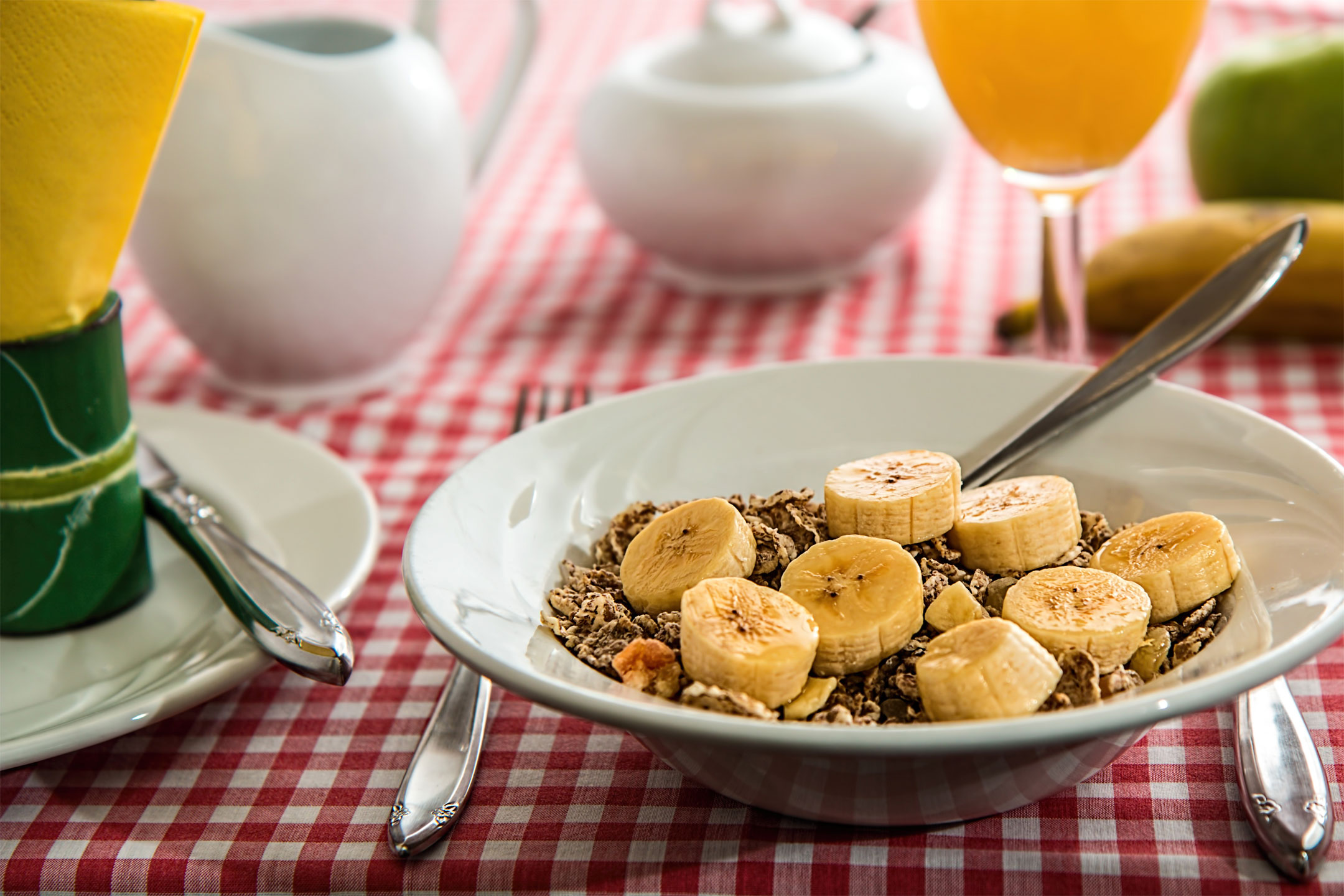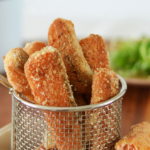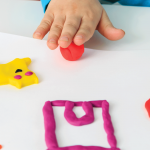
30 Dec Fuelled Up: eating for fun or fuel
Who doesn’t like chocolate or a triple-cheese pizza with extra cheese? Food is a joy, but eating is also serious business. When it comes to food, says Natalie Ritchie, do you eat for fun or fuel?
Kids’ bodies and minds need the right intake to thrive, and parenting often calls for 24-hour energy. Looking at food as energy – a key ingredient in our daily success – rather than entertainment can transform the food choices you make.
Accredited practising dietitian and Dietitians Association of Australia spokesperson, Natasha Meerding has a special interest in maternal and paediatric nutrition. She has based her career on the principle that food is fuel.
“It’s nothing new that breakfast is the most important meal of the day,” says Natasha. Studies show that schoolchildren who eat breakfast have improved memory, greater problem-solving ability, higher accuracy in mathematics and are more creative thinkers. Despite breakfast’s starring role in our day, a recent Australian Bureau of Statistics report found that one in seven Australian children skips breakfast.
With all the often-conflicting information out there about what and when to eat, here’s what you really need to know about food and fuel for your kids.
ENERGY
One of the things we need most from food is sustained energy. Energy comes from carbohydrates (carbs), which break down into glucose that’s used by both your body and brain. Wholegrains with fibre are more nutrient-dense than refined grains like white bread, white pasta and rice. Their slower energy release avoids energy spikes. It can be difficult to get kids to eat wholegrains, so Natasha’s advice is to introduce them young and eat them in front of your kids.
We should feed children carbs throughout the day, along with catalysts like calcium, B vitamins and iron, which are all important for mental development and growth. “Think of the carbs as petrol, and vitamins and minerals as the car’s ignition key,” says Natasha.
Energy Checklist
- Carbohydrates: grains, fruit and veg are good sources, and so are legumes (eg: adzuki beans which are in baked beans), and even milk and yoghurt (lactose).
- B vitamins: cereals such as oats and quinoa.
- Calcium: cheese and milk.
- Legumes: lentils, chickpeas and beans.
- Iron: highest in red meat, and found in chicken, fish, legumes and tofu, although vegetable-based iron is not as easily absorbed.
ACTIVE KIDS
Protein is key for children’s rapid muscle and bone development. Protein sources with kid-appeal include Bolognese meat sauce, DIY nuggets made with chicken mince rolled in breadcrumbs, tuna and eggs. Low-fat versions of dairy products are okay for children over the age of two, says Natasha, but be wary of the high sugar content in some low-fat products, such as flavoured yoghurt. If kids won’t drink skimmed milk, try semi-skimmed milk, she says.
Active Checklist
- Protein: red meat, chicken, fish, eggs and dairy.
BRAIN BOOSTERS
Kids’ brains need nourishment, too. Breakfast is essential and so is adequate energy throughout the day. B vitamins have been found to enhance memory in children. Omega-3 fatty acids are good for brain functioning (and benefit the heart and joint health), and iodine has a role in brain development.
“Little kids are often too busy playing to eat, so pack a quick and easy snack they can move around with, like a banana or a cheese and cucumber sandwich,” says Natasha. “A 10-minute sit-down at recess is not always long enough for small children.”
Little kids have little stomachs and can get ‘ratty’ if they miss out on regular small meals. Morning and afternoon tea are important, but choose mini-meals from the five food groups (grains, lean meat/fish/eggs/nuts, vegetables and legumes, fruit and dairy), rather than ‘sometimes’ foods like biscuits, Natasha advises. “Water should be their main drink, and sometimes milk,” she says. “Keep juice for special occasions such as birthday parties.”
Brain Boosters Checklist
- A variety from the five food groups.
- Omega-3s: oily fish (salmon, sardines and tuna), avocado, flaxseed oils, almonds and walnuts; also in breastmilk.
- Iodine: some seafood and dairy products, and as an additive to bread. For pregnant and breastfeeding women, the National Health and Medical Research Council recommends an iodine supplement to support your child’s developing brain.
HEAL THYSELF
Food is a marvellous healer of physical and emotional wounds, but it’s tricky to separate the interwoven relationship between nurturing and food, cautions Natasha. Keep emotional upset and food separate. Don’t give chocolate as a balm for unhappiness, for example. She also recommends that parents don’t use dessert as a reward for eating the main meal. “That sets up a hierarchy of food,” she explains, with less healthy food at the top.
When our children are sick, however, that metaphor for soothing sustenance, chicken soup, is a good choice, she says. It’s easy to swallow, hydrates, and has proteins and vegetables for vitamins.
Nutrition is important for your immune system as well as new tissue for scratches and scrapes, says Natasha. Protein, vitamins A, C, E and zinc are all known to have an important role in immune function and healing.
Healing Checklist
- Vitamin C: citrus fruits, capsicums, dark leafy greens like kale and spinach, broccoli, berries, kiwifruit, tomatoes and chilli.
- Vitamin A: sweet potatoes, carrots, kale, spinach, red capsicum and apricots.
- Vitamin E: vegetable oils, nuts and seeds.
- Zinc: red meat, chicken, fish, dairy, eggs, legumes, nuts and seeds.
PICKY EATER?
Natasha describes a handy ‘Division of Responsibility’ that can head fussy feeders off at the pass.
“It’s the parents’ responsibility to provide healthy food, five to six times a day for younger children and three times a day for older children. It is, however, the child’s job to decide if they will eat it, and how much. Don’t force children to eat, but don’t jump in with other food if they won’t eat what’s on offer.”
GROWN-UPS
A parent’s day is built on a foundation of sound nutrition, but finding time to eat and eat well can feel beyond many of us.
“Eat when your children eat,” Natasha advises. “Make it a priority. Eat away from distractions like iPhones and TV. Obviously you will be distracted by the kids, but you’re sharing a meal with them. Eat more mindfully. Say to yourself ‘I need to put the kettle on and make that cup of tea’.”
Eat more frequently if you find you’re scraping by, she suggests. We tend to snack on the food we’re preparing, she notes, so try to snack on vegetables rather than less fuel-filled choices.
Try these three energy hits:
- Get three of the five food groups – dairy, fruit or vegetables and carbs – at breakfast. Ideas: toast with omelette, spinach and mushrooms; pancakes with strawberries and yoghurt; or porridge with stewed apples and milk.
- Kids and carers need snacks: try a wholegrain cracker with cheese, fruit smoothies, veggie sticks and a yoghurt-based dip, cut up fruit, a slice of raisin toast, or a boiled egg.
- Stay well-nourished: menu-plan to avoid the last-minute allure of ‘fast food’ and keep healthy staples in the fridge.
For a ‘smart-eating’ quiz and tips, a health self-assessment, and food resources including an A-Z of nutrition, visit the Dietitians Association of Australia




